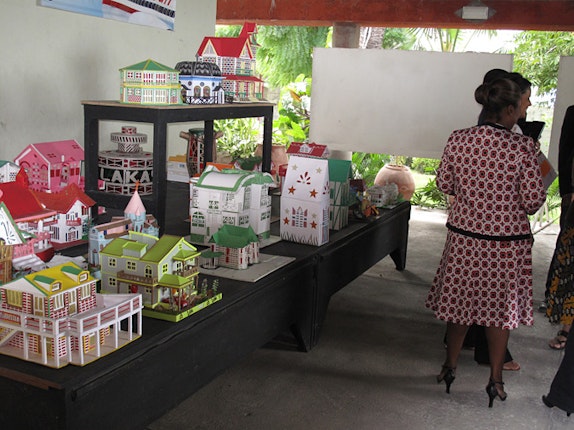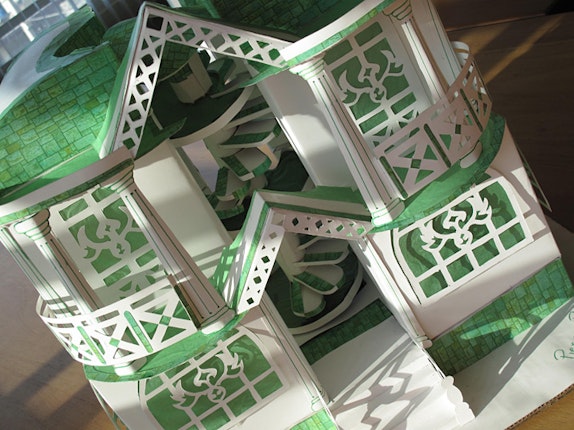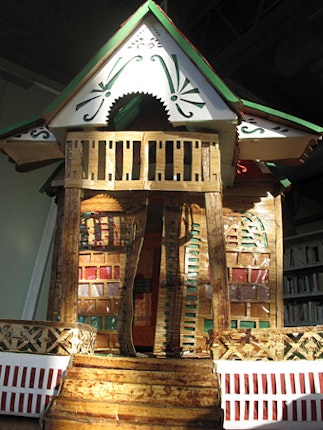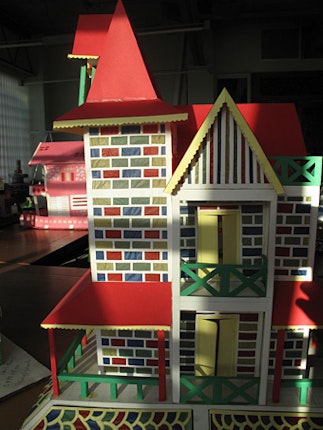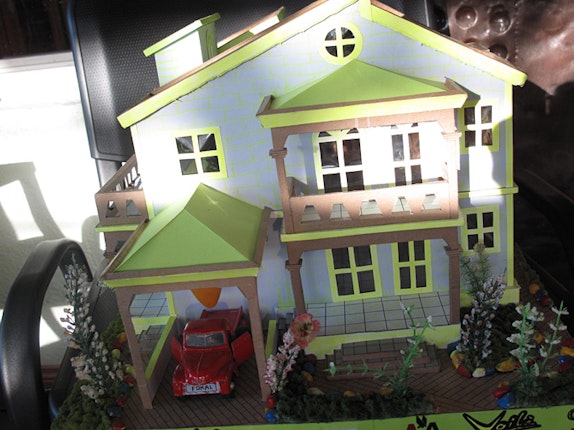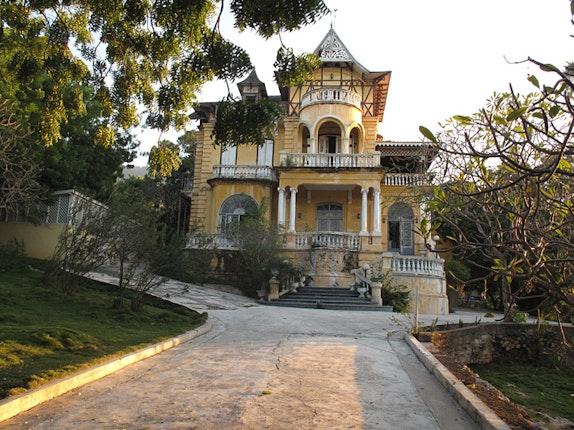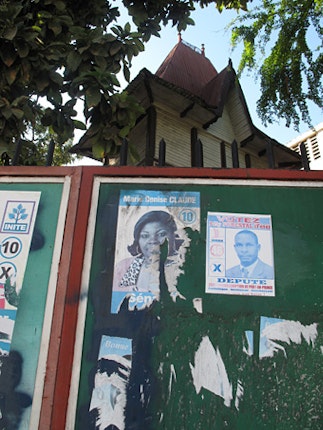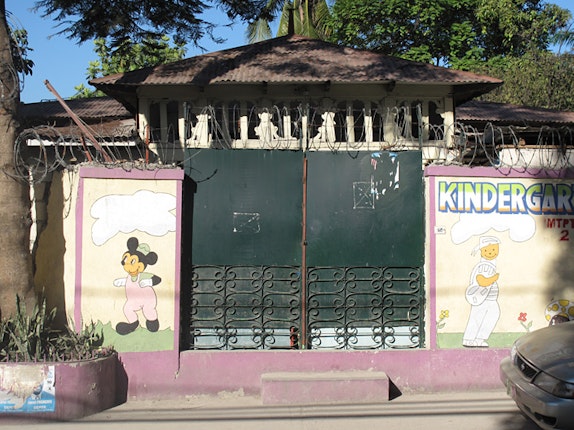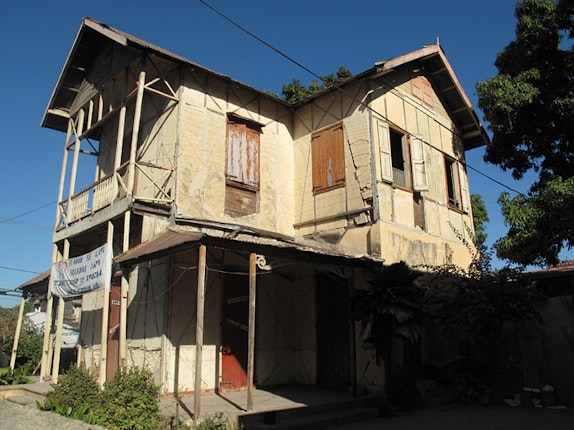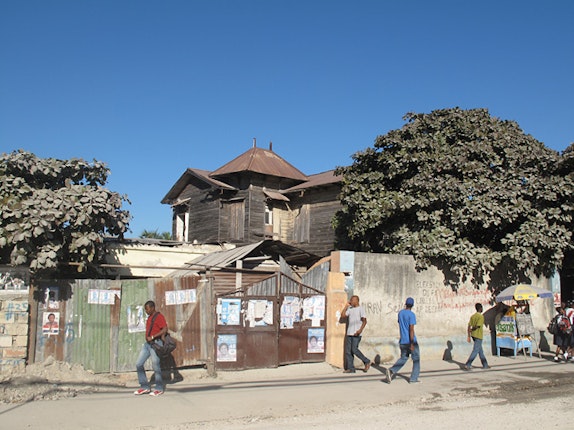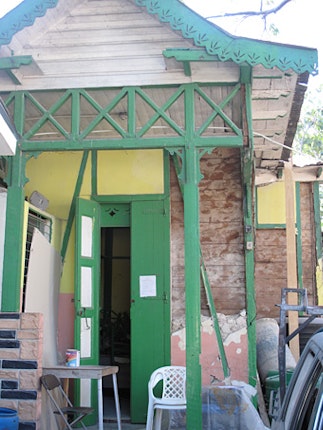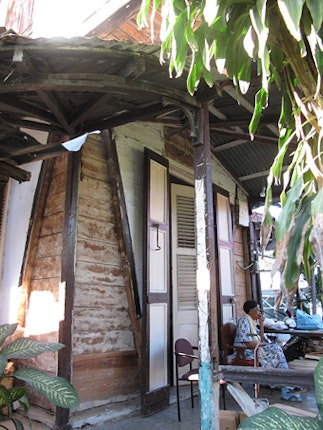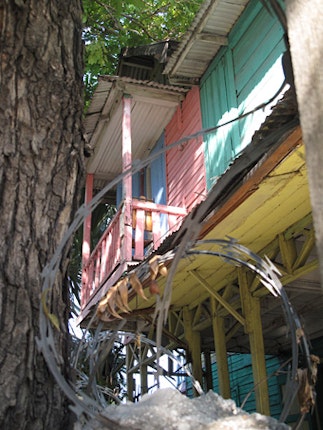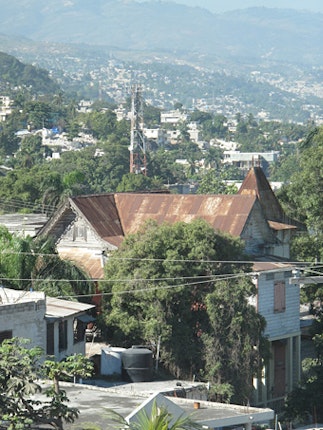Saving the Gingerbread Houses of Port-au-Prince
By Farah Hyppolite
Much of Haiti’s capital, Port-au-Prince, is a dystopia of earthquake rubble, crumbling concrete houses, and tents of heavy plastic jammed into areas cut by dirt paths and streets littered with trash and potholed by torrents of rainwater. Private residences of highborn and low are protected by forbidding walls, many of them topped by spirals of razor wire to ward off invasions by burglars and kidnappers. The 2010 earthquake brought down the seat of Haiti’s government, the capital city’s hospital, and its cathedral as well as hotels and other commercial buildings and thousands of homes built upon mushy foundations using concrete mixed with too much sand and too few steel reinforcement bars.
This grim landscape is, however, dotted by an array of time- and weather-worn architectural gems, most of which survived the earthquake. These are gingerbread houses right out of Hansel and Gretel, houses of painted wood with tall, sharp gables, witch-hat spires, carved eves and cornices, and shaded porches for afternoons of rocking in chairs, napping in hammocks, and sipping rum punch.
Some of these houses are grand and imposing, others seem to hide behind trees like shy old women. Some are occupied, others are abandoned and seem to be haunted. Some are well-maintained, while others are fodder for termites and dry rot. One, the teetery Hotel Olofsson, became famous as a setting in Graham Greene’s novel The Comedians; another, which houses the headquarters of the international medical relief organization Médecins sans Frontièrs, was the setting for life-and-death struggles in the hours and days after the earthquake.
The disaster prompted FOKAL, the Open Society foundation in Haiti, to launch a project whose aim is to restore the gingerbread houses to their lost splendor and preserve them as a link with Haiti’s past. FOKAL’s role is to help the owners of these houses to organize themselves. FOKAL is also working to establish a fund for these owners to finance restoration of their homes and to help train craftsmen and architects qualified to restore these structures.
I was born in a small wood-frame house in the gingerbread style. It had a big yard in front and back where I would play as a child. The porch allowed us to spend our days out of doors, but out of the sun. The high ceilings allowed for good ventilation, and you can feel the difference once you move into a house of concrete. The decorations carved in the wood allow the imagination to run wild. These houses are well adapted to our geophysical and climate conditions. Except for those with masonry walls, the gingerbread houses were mostly flexible and withstood the shaking during the earthquake. These houses are also lifted above the ground to enable them to survive inundations. They stand as symbols of a lost period when the country was in better shape. They were built by accomplished architects and some were occupied by ambassadors, presidents, and business owners.
Preserving the gingerbread houses is crucial for Haiti, because so little remains of the country’s past. They provide a model we should study now as we build and rebuild for the future. It is a dream of Haitian architects to work on these structures. It is also a dream of Haitian kids to live in one, as I once did.
Each year, children and young adults in Port-au-Prince fantasize about the gingerbread houses. It is a local tradition for young people to make decorative lamps in the shape of a gingerbread house, complete with porches, decorated windows and eves, and other architectural elements. In this idealized world, the yellows, pinks, greens, and blues are as bright as nature can cast. The walls are clean and firm. The roofs show no rust. The yards, some surrounded by walls topped with razor wire, are without gravel, or rubble, or tents for refugees.
In FOKAL’s lamp-building contest marking the earthquake’s first anniversary, the winner was an evergreen-on-white model of a house with a tall, acutely angled roof, sharp lines, and a porch with a balustrade looking down on the front entrance. A child made it—a child who lost his mother in the earthquake.
Farah Hyppolite is an architect at Fondation Connaissance et Liberte (FOKAL).
